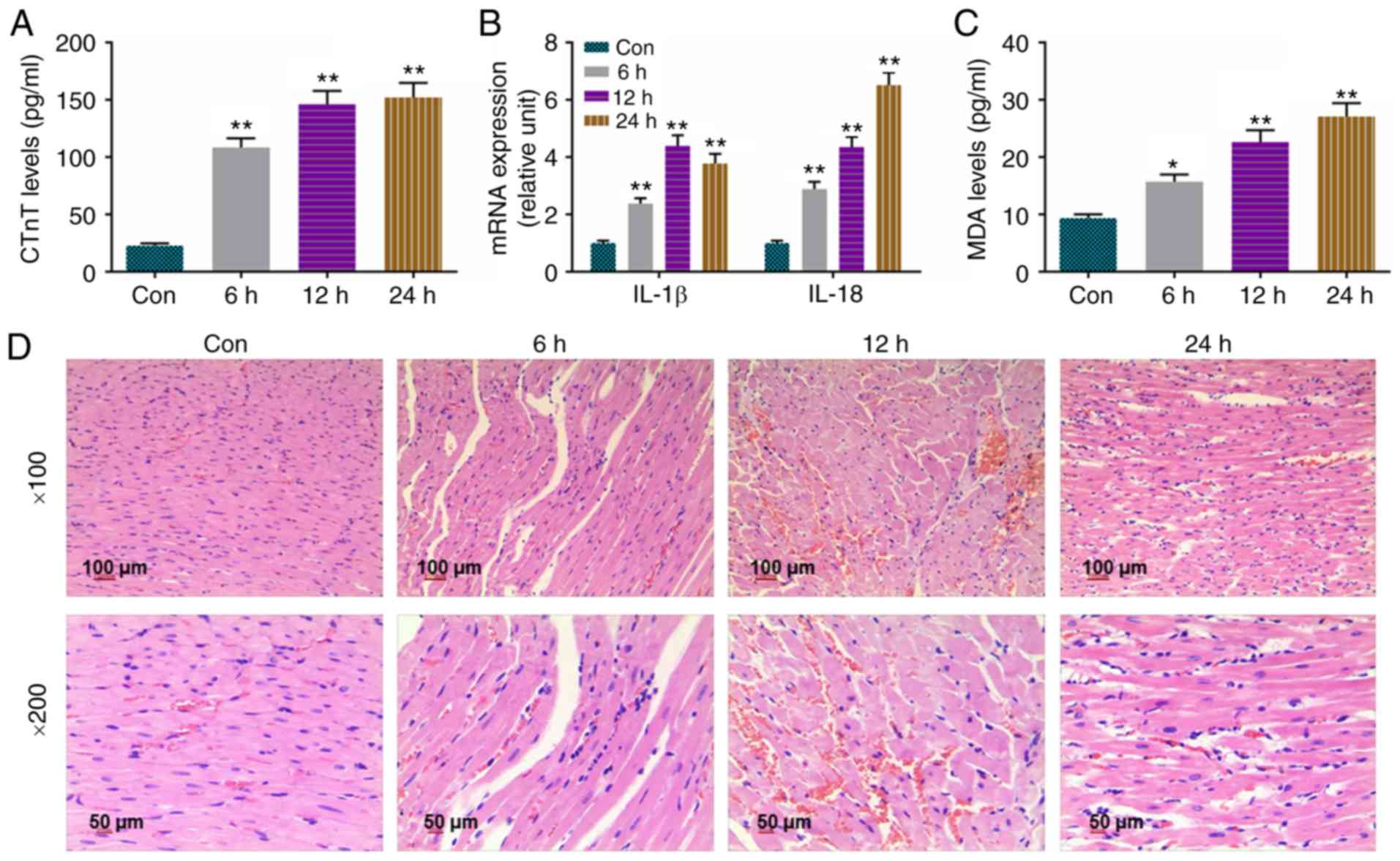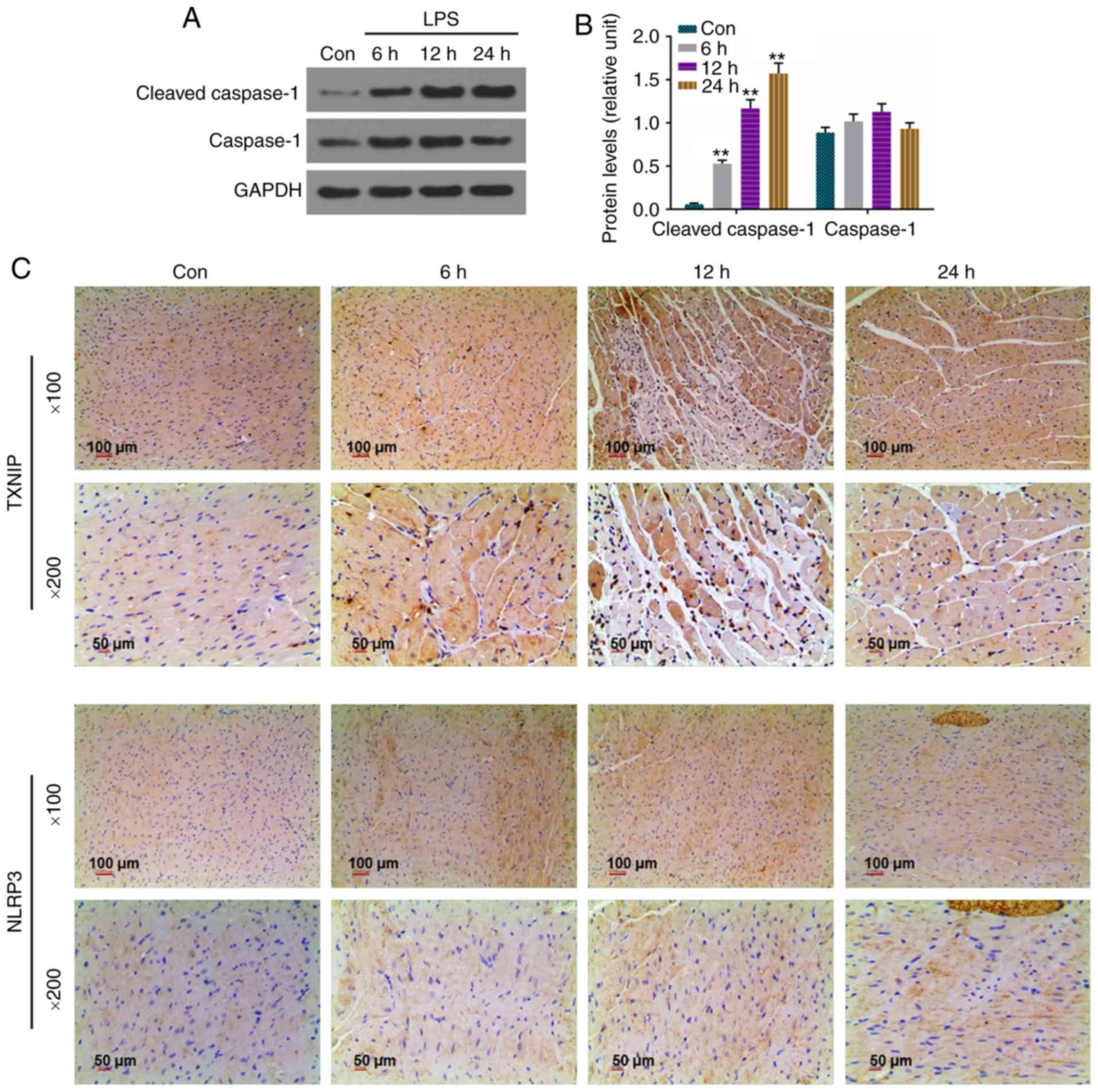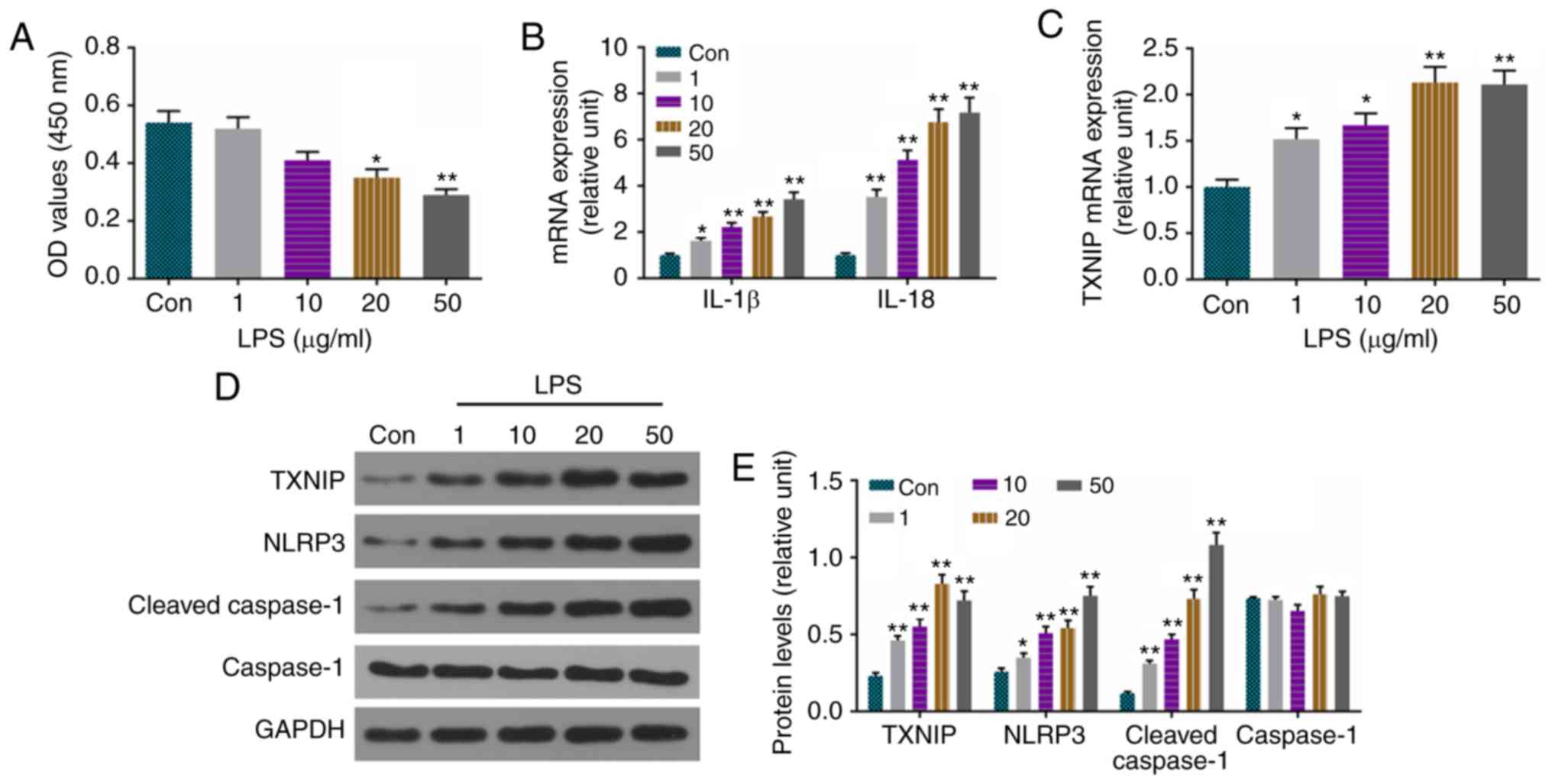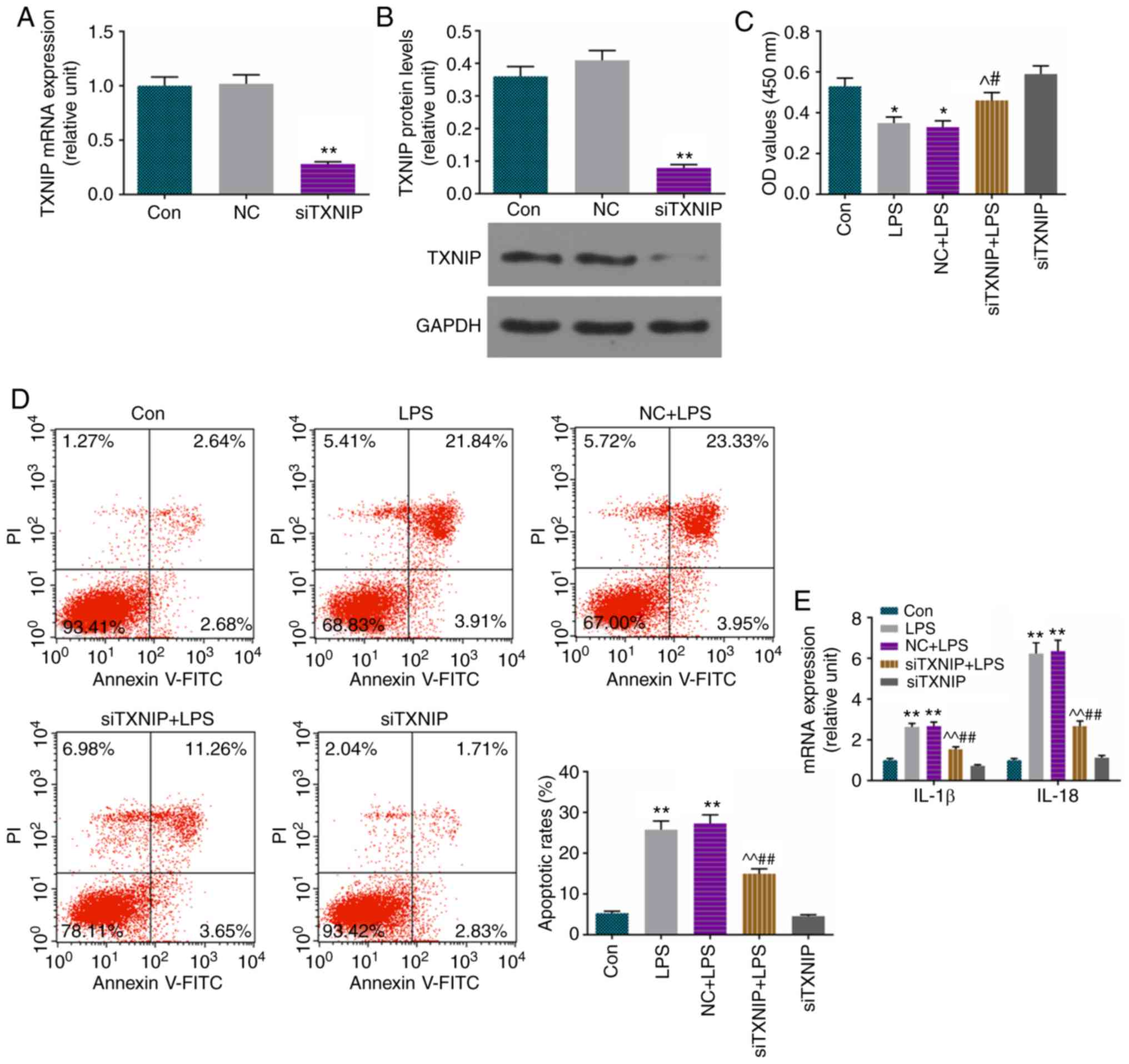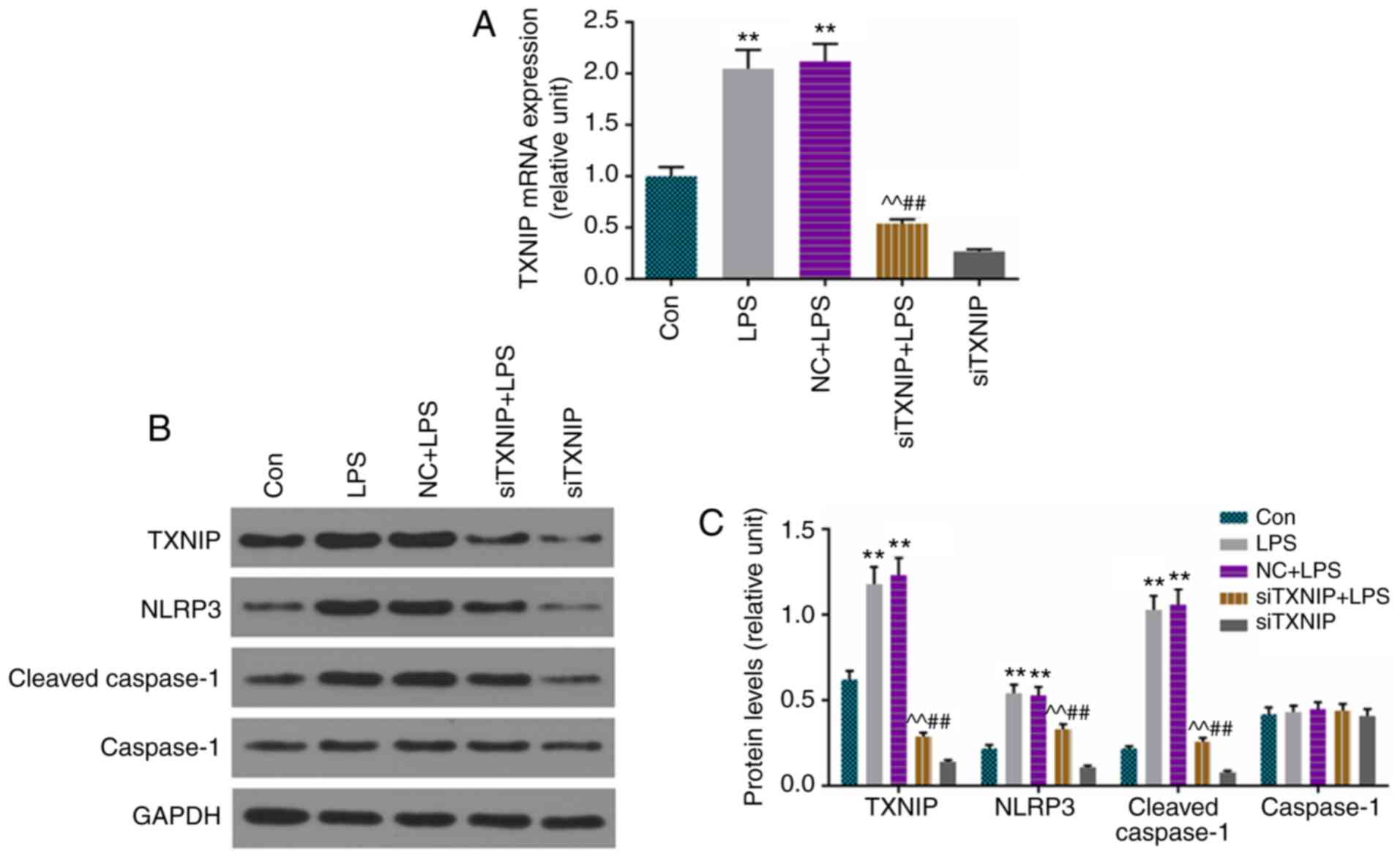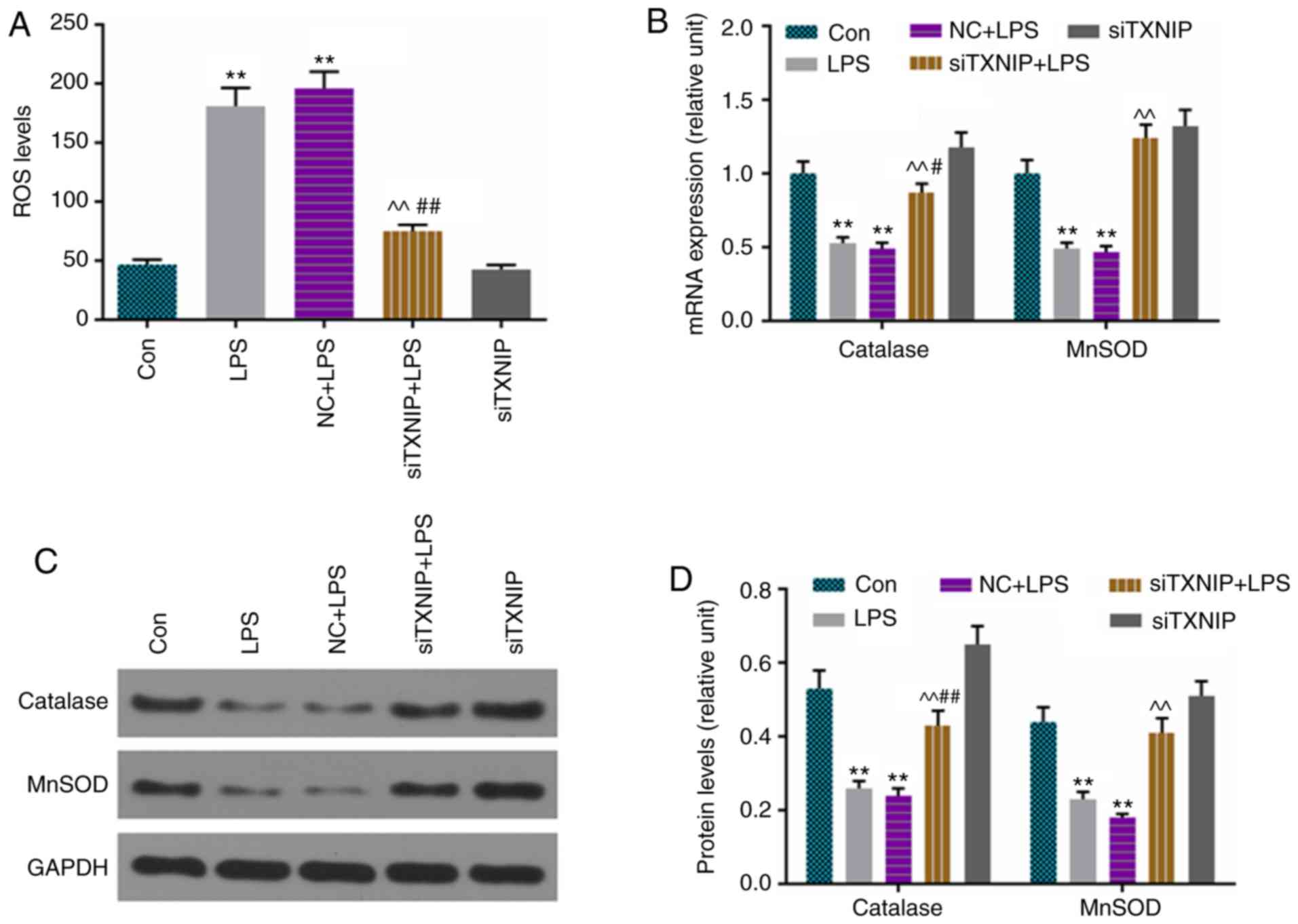|
1
|
Xu YB ZH, Chen SZ, Chen GR and Guo S:
Optimization and identification of anti-sepsis potential targets of
palmatine. Chin J Mod Appl Pharm. 35:1602–1605. 2018.
|
|
2
|
Stanzani G, Duchen MR and Singer M: The
role of mitochondria in sepsis-induced cardiomyopathy. Biochim
Biophys Acta Mol Basis Dis. 1865:759–773. 2019. View Article : Google Scholar
|
|
3
|
Rabuel C and Mebazaa A: Septic shock: A
heart story since the 1960s. Intensive Care Med. 32:799–807. 2006.
View Article : Google Scholar : PubMed/NCBI
|
|
4
|
Rudiger A and Singer M: Mechanisms of
sepsis-induced cardiac dysfunction. Crit Care Med. 35:1599–1608.
2007. View Article : Google Scholar : PubMed/NCBI
|
|
5
|
Meng F, Lai H, Luo Z, Liu Y, Huang X, Chen
J, Liu B, Guo Y, Cai Y and Huang Q: Effect of xuefu zhuyu decoction
pretreatment on myocardium in sepsis rats. Evid Based Complement
Alternat Med. 2018:29393072018. View Article : Google Scholar : PubMed/NCBI
|
|
6
|
Anthonymuthu TS, Kim-Campbell N and Bayir
H: Oxidative lipidomics: Applications in critical care. Curr Opin
Crit Care. 23:251–256. 2017. View Article : Google Scholar : PubMed/NCBI
|
|
7
|
Al-Salam S and Hashmi S: Myocardial
ischemia reperfusion injury: Apoptotic, inflammatory and oxidative
stress role of galectin-3. Cell Physiol Biochem. 50:1123–1139.
2018. View Article : Google Scholar : PubMed/NCBI
|
|
8
|
Su Q, Li L, Sun Y, Yang H, Ye Z and Zhao
J: Effects of the TLR4/Myd88/NF-κB signaling pathway on NLRP3
inflammasome in coronary microembolization-induced myocardial
injury. Cell Physiol Biochem. 47:1497–1508. 2018. View Article : Google Scholar
|
|
9
|
Kayagaki N, Stowe IB, Lee BL, O'Rourke K,
Anderson K, Warming S, Cuellar T, Haley B, Roose-Girma M, Phung QT,
et al: Caspase-11 cleaves gasdermin D for non-canonical
inflammasome signalling. Nature. 526:666–671. 2015. View Article : Google Scholar : PubMed/NCBI
|
|
10
|
Chen W, Zhao M, Zhao S, Lu Q, Ni L, Zou C,
Lu L, Xu X, Guan H, Zheng Z and Qiu Q: Activation of the
TXNIP/NLRP3 inflammasome pathway contributes to inflammation in
diabetic retinopathy: A novel inhibitory effect of minocycline.
Inflamm Res. 66:157–166. 2017. View Article : Google Scholar
|
|
11
|
Zheng R, Tao L, Jian H, Chang Y, Cheng Y,
Feng Y and Zhang H: NLRP3 inflammasome activation and lung fibrosis
caused by airborne fine particulate matter. Ecotoxicol Environ Saf.
163:612–619. 2018. View Article : Google Scholar : PubMed/NCBI
|
|
12
|
Takimoto E and Kass DA: Role of oxidative
stress in cardiac hypertrophy and remodeling. Hypertension.
49:241–248. 2007. View Article : Google Scholar
|
|
13
|
Haileselassie B, Su E, Pozios I, Niño DF,
Liu H, Lu DY, Ventoulis I, Fulton WB, Sodhi CP, Hackam D, et al:
Myocardial oxidative stress correlates with left ventricular
dysfunction on strain echocardiography in a rodent model of sepsis.
Intensive Care Med Exp. 5:212017. View Article : Google Scholar : PubMed/NCBI
|
|
14
|
Assem M, Teyssier JR, Benderitter M,
Terrand J, Laubriet A, Javouhey A, David M and Rochette L: Pattern
of superoxide dismutase enzymatic activity and RNA changes in rat
heart ventricles after myocardial infarction. Am J Pathol.
151:549–555. 1997.PubMed/NCBI
|
|
15
|
Lone MU, Baghel KS, Kanchan RK,
Shrivastava R, Malik SA, Tewari BN, Tripathi C, Negi MP, Garg VK,
Sharma M, et al: Physical interaction of estrogen receptor with
MnSOD: Implication in mitochondrial O2.− upregulation
and mTORC2 potentiation in estrogen-responsive breast cancer cells.
Oncogene. 36:1829–1839. 2017. View Article : Google Scholar
|
|
16
|
Livak KJ and Schmittgen TD: Analysis of
relative gene expression data using real-time quantitative PCR and
the 2(−Delta Delta C(T)) method. Methods. 25:402–408. 2001.
View Article : Google Scholar
|
|
17
|
Klingenberg C, Kornelisse RF, Buonocore G,
Maier RF and Stocker M: Culture-negative early-onset neonatal
sepsis-at the crossroad between efficient sepsis care and
antimicrobial stewardship. Front Pediatr. 6:2852018. View Article : Google Scholar
|
|
18
|
Liu H, Sun Y, Zhang Y, Yang G, Guo L, Zhao
Y and Pei Z: Role of thymoquinone in cardiac damage caused by
sepsis from BALB/c mice. Inflammation. 42:516–525. 2019. View Article : Google Scholar
|
|
19
|
Stoll LL, Denning GM and Weintraub NL:
Potential role of endotoxin as a proinflammatory mediator of
atherosclerosis. Arterioscler Thromb Vasc Biol. 24:2227–2236. 2004.
View Article : Google Scholar : PubMed/NCBI
|
|
20
|
Kakihana Y, Ito T, Nakahara M, Yamaguchi K
and Yasuda T: Sepsis-induced myocardial dysfunction:
Pathophysiology and management. J Intensive Care. 4:222016.
View Article : Google Scholar : PubMed/NCBI
|
|
21
|
Iqbal M, Cohen RI, Marzouk K and Liu SF:
Time course of nitric oxide, peroxynitrite, and antioxidants in the
endotoxemic heart. Crit Care Med. 30:1291–1296. 2002. View Article : Google Scholar : PubMed/NCBI
|
|
22
|
Afulukwe IF, Cohen RI, Zeballos GA, Iqbal
M and Scharf SM: Selective NOS inhibition restores myocardial
contractility in endotoxemic rats; however, myocardial NO content
does not correlate with myocardial dysfunction. Am J Respir Crit
Care Med. 162:21–26. 2000. View Article : Google Scholar : PubMed/NCBI
|
|
23
|
Cohen RI, Wilson D and Liu SF: Nitric
oxide modifies the sarcoplasmic reticular calcium release channel
in endotoxemia by both guanosine-3′,5′ (cyclic) phosphate-dependent
and independent pathways. Crit Care Med. 34:173–181. 2006.
View Article : Google Scholar
|
|
24
|
Chagnon F, Bentourkia M, Lecomte R,
Lessard M and Lesur O: Endotoxin-induced heart dysfunction in rats:
Assessment of myocardial perfusion and permeability and the role of
fluid resuscitation. Crit Care Med. 34:127–133. 2006. View Article : Google Scholar
|
|
25
|
Maxwell MH, Robertson GW and Moseley D:
Potential role of serum troponin T in cardiomyocyte injury in the
broiler ascites syndrome. Br Poult Sci. 35:663–667. 1994.
View Article : Google Scholar : PubMed/NCBI
|
|
26
|
Choon-ngarm T and Partpisanu P: Serum
cardiac troponin-T as a prognostic marker in septic shock. J Med
Assoc Thai. 91:1818–1821. 2008.
|
|
27
|
Yang L, Zhang H and Chen P: Sulfur dioxide
attenuates sepsis-induced cardiac dysfunction via inhibition of
NLRP3 inflammasome activation in rats. Nitric Oxide. 81:11–20.
2018. View Article : Google Scholar : PubMed/NCBI
|
|
28
|
Wu D, Shi L, Li P, Ni X, Zhang J, Zhu Q,
Qi Y and Wang B: Intermedin1-53 protects cardiac fibroblasts by
inhibiting NLRP3 inflammasome activation during sepsis.
Inflammation. 41:505–514. 2018. View Article : Google Scholar
|
|
29
|
Zhang B, Liu Y, Sui YB, Cai HQ, Liu WX,
Zhu M and Yin XH: Cortistatin inhibits NLRP3 inflammasome
activation of cardiac fibroblasts during sepsis. J Card Fail.
21:426–433. 2015. View Article : Google Scholar : PubMed/NCBI
|
|
30
|
Lopes de Oliveira GA, Alarcón de la Lastra
C, Rosillo MÁ, Castejon Martinez ML, Sánchez-Hidalgo M, Rolim
Medeiros JV and Villegas I: Preventive effect of bergenin against
the development of TNBS-induced acute colitis in rats is associated
with inflammatory mediators inhibition and NLRP3/ASC inflammasome
signaling pathways. Chem Biol Interact. 297:25–33. 2019. View Article : Google Scholar
|
|
31
|
Shen HH, Yang YX, Meng X, Luo XY, Li XM,
Shuai ZW, Ye DQ and Pan HF: NLRP3: A promising therapeutic target
for autoimmune diseases. Autoimmun Rev. 17:694–702. 2018.
View Article : Google Scholar : PubMed/NCBI
|
|
32
|
Clavier T, Besnier E, Lefevre-Scelles A,
Lanfray D, Masmoudi O, Pelletier G, Castel H, Tonon MC and Compère
V: Increased hypothalamic levels of endozepines, endogenous ligands
of benzodiazepine receptors, in a rat model of sepsis. Shock.
45:653–659. 2016. View Article : Google Scholar : PubMed/NCBI
|
|
33
|
Hara Y, Shimomura Y, Nakamura T, Kuriyama
N, Yamashita C, Kato Y, Miyasho T, Sakai T, Yamada S, Moriyama K
and Nishida O: Novel blood purification system for regulating
excessive immune reactions in severe sepsis and septic shock: An ex
vivo pilot study. Ther Apher Dial. 19:308–315. 2015. View Article : Google Scholar : PubMed/NCBI
|
|
34
|
Sandanger Ø, Ranheim T, Vinge LE, Bliksøen
M, Alfsnes K, Finsen AV, Dahl CP, Askevold ET, Florholmen G,
Christensen G, et al: The NLRP3 inflammasome is up-regulated in
cardiac fibroblasts and mediates myocardial ischaemia-reperfusion
injury. Cardiovasc Res. 99:164–174. 2013. View Article : Google Scholar : PubMed/NCBI
|
|
35
|
Jin C and Flavell RA: Molecular mechanism
of NLRP3 inflammasome activation. J Clin Immunol. 30:628–631. 2010.
View Article : Google Scholar : PubMed/NCBI
|
|
36
|
Nishiyama A, Matsui M, Iwata S, Hirota K,
Masutani H, Nakamura H, Takagi Y, Sono H, Gon Y and Yodoi J:
Identification of thioredoxin-binding protein-2/vitamin D(3)
up-regulated protein 1 as a negative regulator of thioredoxin
function and expression. J Biol Chem. 274:21645–21650. 1999.
View Article : Google Scholar : PubMed/NCBI
|
|
37
|
Liu Y, Lian K, Zhang L, Wang R, Yi F, Gao
C, Xin C, Zhu D, Li Y, Yan W, et al: TXNIP mediates NLRP3
inflammasome activation in cardiac microvascular endothelial cells
as a novel mechanism in myocardial ischemia/reperfusion injury.
Basic Res Cardiol. 109:4152014. View Article : Google Scholar : PubMed/NCBI
|















